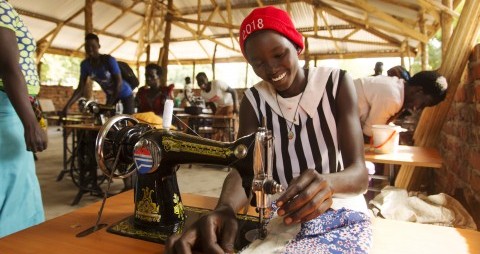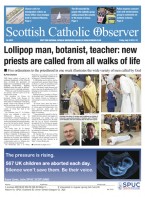BY Peter Diamond | April 19 | ![]() 0 COMMENTS
0 COMMENTS ![]() print
print
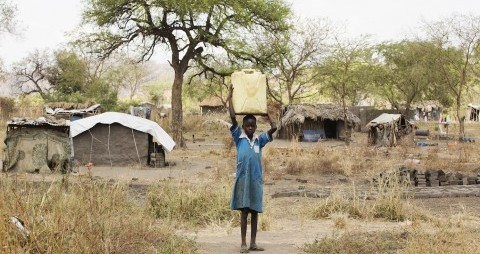
Mother courage: the South Sudanese women seeking refuge in Uganda
Peter Diamond meets some of the thousands of women refugees living in Ugandan aid camps
The roads on our way up north to the Ugandan refugee camps were an experience I shall never forget. For prolonged spells the road seemed to disappear and it felt as though we were on a theme-park simulator ride.
Our journey from Gulu, in northern Uganda, took more than four hours and included travelling on a small boat across the White Nile, a tributary of the River Nile.
After a journey on a packed ferry, one which probably wouldn’t have met health and safety regulations anywhere in the world, we got back into the minibus and on to the rocky road.
A seminarian, who looked about 16 years old, met us and was our guide to the refugee camp, weaving and speeding across the dusty track on his motorbike.
On arrival, we spoke to Fr Moses Onzima who was eager to tell us about the vital work that is already making a difference in the Paloriyna Base Camp.
In Nothern Uganda, the total number of refugees was 1,395,146, spread across many settlements.
Fleeing home
A staggering 1,037,898 of the refugees are from South Sudan, where years of conflict, instability and war has caused millions to flee their homes.
The problems facing South Sudanese people are not confined to Uganda as 57 per cent are encamped beyond the borders of the ‘Pearl of Africa.’
They are scattered throughout neighbouring countries including DR Congo, Kenya and Central African Republic (CAR).
In Palorinya, where I travelled with a delegation from the Scottish Catholic International Aid Fund (SCIAF), the refugee camp has placed great stress on local villages which are within the camp’s perimeter.
Vulnerable people
The base camp we visited contained mostly women and children. They made up 80 per cent of the refugees.
All had left their homes with little or nothing, and were the main casualties of the continuing war.
Uganda’s infamous Bidi-Bidi camp contains around 270,000 refugees. In the much smaller Paloriyna Camp there were nearly 1,894 temporary homes with 9,470 people living there, which equates to five people per temporary home.
Such a population density means food and water are scarce and the risk of diseases spreading is very high.
Relentless need
Fr Moses and his team at Caritas Uganda, SCIAF’s partner agency implementing projects on the ground, spoke about the relentless need in the camps.
Fr Moses, who is only four years ordained, said: “There has been a constant flow of refugees since the camp opened.
They come from all directions with some on foot, even barefoot—a journey which has taken some of them weeks to make.
“Due to the number of females at the site there have been a number of key interventions by Caritas designed to help them learn practical skills, which will benefit them.
“Because the refugee camp is located amongst Ugandan villages there is a 30 to 70 per cent split of distribution between locals and refugees of programmes which include tailoring and sewing.”
Life-changing work
As we entered the sewing class, which doubles as a church on Sundays, the women began singing a welcoming song.
Shain Likicho, who was previously a farmer before she arrived at the camp, spoke about why the sewing projects— which among other things make sanitary towels—have become not only profit-making but also life-changing.
Shain, 34, said: “The towels are so important. They are really making a difference because you cannot easily get them and often at your time of the month you cannot go to school, and therefore miss your education.”
The towels are very well made; they are waterproof and hold their shape so can be washed and reused for up to six months.
Jane Birungi, 26, said: “We make female clothes, uniforms for school, and also do repairs.
“At Christmas time we made a lot of money, because there were increased orders. It has changed our lives because now we can support our families; most of us are single mothers and are very vulnerable.
“I make 3,000 Ugandan shillings (60p) for every pad pack and there is six in one pack. It takes me 40 minutes to make one pad.”
Everlyn Dradrimio, 18, added: “I dropped out of school aged 16 because there was no one to pay my fees but now I can earn money, improve my lifestyle and make my own clothes.”
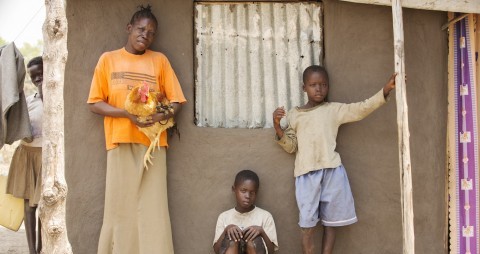
Jane Ajio and children, Ivan, 10, and Peace, 12. Palorinya refugee camp, close to the south sudan border, in Northern Uganda.
A family’s terror
The influx of South Sudanese has been unprecedented in recent years.
One woman who fled the torment of conflict was Jane Ajio, 30, and her three children.
Her brother was shot and her nephew was executed with a machete, an unimaginable horror, which was the main reason she left with little notice.
Jane said: “I came to Uganda in February 2017 with my two daughters, Patience, 12, Peace, three, and my son Ivan, 10.
“I fled my home because of the violence. I had no hope at all and the war brought so much fear and devastation.
“I lost many things including my home and some of my family. My home was robbed and looted. Rebels controlled our village—we fed them and they treated us OK but they wanted and demanded food, which had ran out.
“Mainly though the violence caused me to run. I lost my brother and my nephew who were executed. I left my husband and my parents behind.
“It took us three days to reach the border and then one day to reach this camp, all of which was travelled on foot.”
A difficult life
Jane could only carry two saucepans and a few clothes along with her baby, who was only a year old at the time, on the long journey.
She added: “At first life was difficult but I have been helped bit by bit.”
When refugees arrive at the camp they are given a plot of land of 30 metres by 30 metres to build a house and work the land, but they receive little else.
Jane described the arduous clearing process which has since allowed her to grow vegetables beside her mud hut.
She said: “Where my home is now was just scrubland. I had to cut the grass, burn it and then clear the land. It was very hard work, which took me over four days.
“I then got someone to make me bricks to build the house and I had to sell part of my food rations from the UN in order to pay for the bricks.
“I now have a house, hen house and farm on the small patch, which is quite fertile and has good drainage.”
SCIAF support
In the weeks at the camp before a house was built Jane and her three children slept in a tent made of plastic sheeting.
Following an intervention from SCIAF, she was given 10 chickens, seedlings, tools, training and a watering can to help create a local farming business.
The upshot is that Jane has been able to make profits that have allowed her to send her children to school, build a toilet and put food on her table.
Hope for the future
Jane said: “In November 2018 I got 10 chickens from SCIAF and I felt happy because I knew that if they grew and were sold and I could save money and send my children to school.
“I now grow potatoes, maize and greens and I hope to be able to sell more vegetables and fish one day.
“My hope is to return home in the future but only if there is peace. It is God who is guiding me here and I put all my hope and trust in Him.”
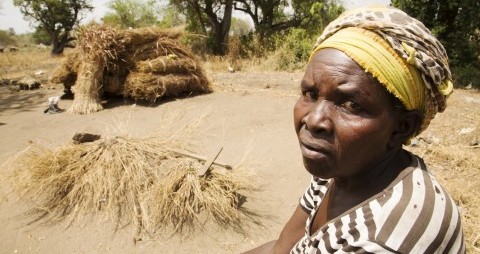
Mary Aba, 61, looking over the grave of her son, Eliazya, who died of epilepsy in the Palorinya refugee camp, close to the south sudan border, in Northern Uganda.
Sad life
Mary Aba was the oldest woman I met at the refugee camp. She is 61 and lives on a small plot with two huts, housing nine people—including five grandchildren.
Her face portrayed a look of constant sadness, the source of which could be traced to a number of heartbreaking experiences.
“I left my village in South Sudan on February 14, 2017, a day after my brother was shot in the chest by a government soldier,” Mary said.
“We lived near the military barracks and they suspected we were collaborating with the rebels and giving them things like food and information.
“My older brother Bosco Lasuba was killed as were my neighbours who were slaughtered with machetes.”
Tragedy
Mary fled with her three sons, one of whom is now buried beside the makeshift mud hut in the refugee camp, after dying in tragic circumstances.
“I fled with my three sons aged 32, 27 and 22. The youngest one, Elizaya is dead and buried beside the house, he died of epilepsy. When I left I took one bedsheet, a mattress that we could carry, a cup and a jerry can.
“The journey took four days to the border on foot and we went without food for most of the journey. We spent three days in transit and then came here.
“My children helped cleared the land here where my home and farm is and from that point we began to settle here.”
International aid
Caritas and SCIAF helped Mary in the same way they helped Jane and many refugees across the camp, by supplying chickens, seeds, tools and training in farming.
Mary said: “I got 10 chickens, which has helped me so much because I can take one to the market to sell and buy things.
“They also lay eggs, up to ten per day, which we can eat or sell too. My profits will be used to buy and repair clothes, food, medicine and my grandchildren’s education.”
Mary insisted that her future is hopeful and that the gunshot-free camp brings her comfort. She said: “I feared death and came here. It is comfortable and you cannot hear gunshots, it is safe.
“If the war stabilises I may go back to South Sudan but I place all my trust in Almighty God, without Him I wouldn’t have made it here.
“I am very hopeful for the future. I have to have hope.”
To donate to SCIAF’s Wee Box appeal visit: www.sciaf.org.uk.


